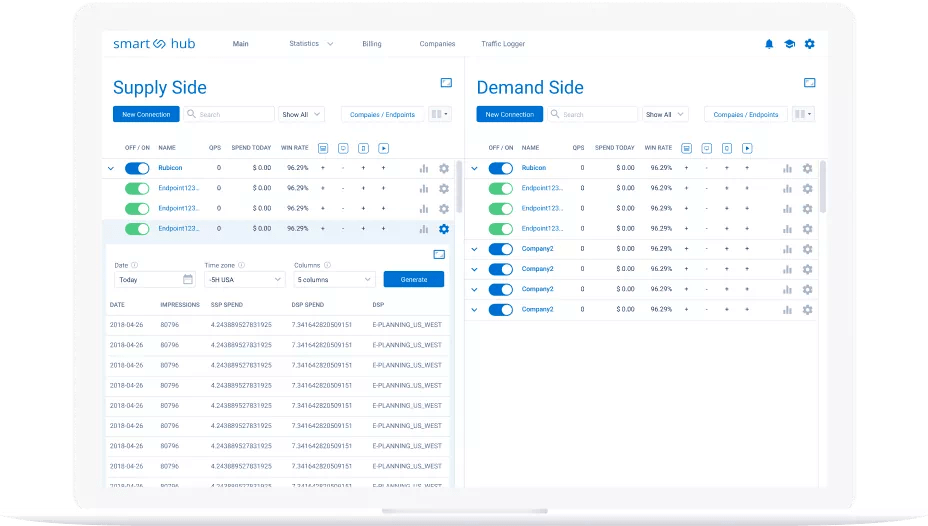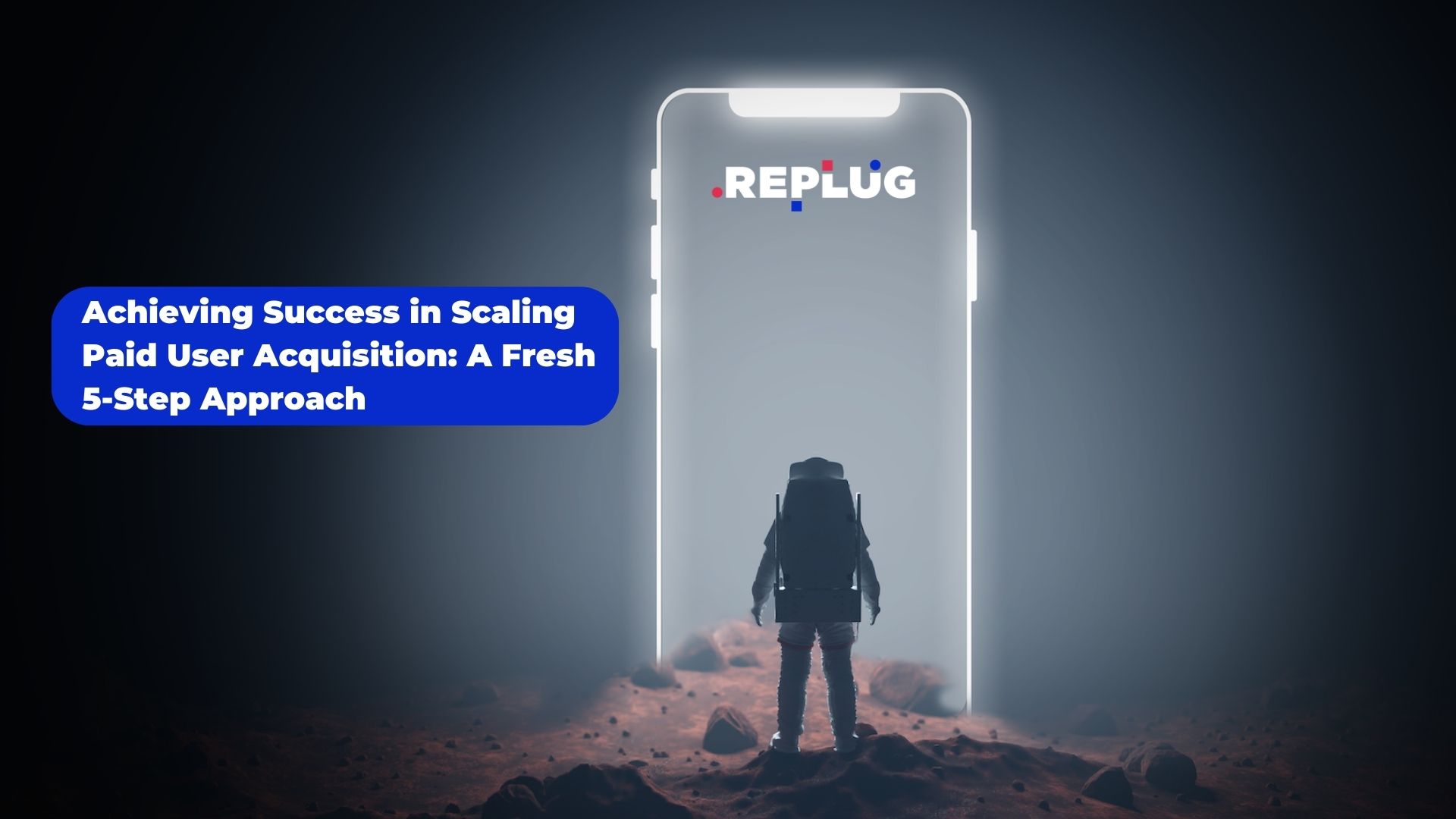Five questions to ask yourself before launching an ad exchange
- Monday, September 27th, 2021
- Share this article:
The number of people who are eager to run a business on their own ad tech platform is increasing. But before they start, there are a lot of questions they need to ask themselves. In this article Roman Vrublivskyi, CCO of SmartHub White Label Ad Exchange, gives detailed answers to the most important and frequently-asked questions you should ask yourself before launching your own ad tech business.
 In 2020, programmatic overtook all other types of advertising, accounting for 85 per cent of ad spending, according to the IAB. If only five years ago Google would show you approximately 1,000 results for the searched phrase “programmatic advertising,” in 2021, you would get around 30.4 million. Another good comparison, again using IAB figures – in 2017, programmatic ad spending accounted for $42.13bn. By the end of 2021, this bar will be raised to $91.095bn.
In 2020, programmatic overtook all other types of advertising, accounting for 85 per cent of ad spending, according to the IAB. If only five years ago Google would show you approximately 1,000 results for the searched phrase “programmatic advertising,” in 2021, you would get around 30.4 million. Another good comparison, again using IAB figures – in 2017, programmatic ad spending accounted for $42.13bn. By the end of 2021, this bar will be raised to $91.095bn.
With this, at some point, according to the IAB, 47 per cent of companies moved programmatic in-house, due to poor media quality, hidden margins, fees and fraud, all of which are commonplace in the industry. Determined to take more control over media trading, companies struggle to find the time and the budget to set their own technology as big brands like Netflix, Kellog, Unilever and others do. The others decide to start a business in programmatic as a way to diversify or create an additional active revenue source. No matter what urge pushes you to start your own business in programmatic, it is important to ask yourself five important questions to determine whether or not you are ready.
1) What are my objectives in building a business in ad tech?
Yes, we’ve already pinpointed that ad tech is a very profitable business that only grows with time. However, programmatic is not a piece of cake. Supply chains are multilayered – they involve countless intermediaries, each of which bites off a certain amount of money from the advertiser’s budget. Unattributed costs can reach 65 per cent, which is why many players decide to build their own ad tech platforms. If you need to understand how and where the budgets are spent, who buys inventory – and at what cost – you need to search for the platform that gives you this transparency. Building your own can surely be a good option.
Ad fraud is another ad budget damager that yearly takes away thousands of advertising dollars.. When you build your own advertising platform, you can create a unique ecosystem of proven partners that you integrate into the marketplace. Plus, you can implement inventory and seller authorization standards and all kinds of traffic scanners…and that’s how you solve problems with fraud.
If you create a new branch of business or diversify, the main objective is quickly gaining profitability and without risks. Like any piece of technology, the ad tech platform is complicated. The process of hiring people and building it from scratch will take months of work. If reaching quick profitability with programmatic is the main objective, you’ll have to look for ways to accelerate your work. The white label advertising business model offers a good solution to this, since it helps companies to build self-branded marketplaces based on pre-built, ready-to-deploy technologies.
2) Do I have the resources to justify it?
For those companies and brands that go in-house, analysts recommend making calculations to find out whether or not the game is worth the candles. If you normally spend at least $20m per year on digital ad campaigns, then going in-house may help to save you money (since commissions and margins to third-party providers are eliminated). Still, the cost of platform creation, installation, testing and licensing may outweigh the potential benefits.
Plus, there’s no guarantee that the ready-made solution that you create will be able to stand in a line alongside known and positioned solutions; for this reason, many companies often buy existing platforms from other companies. The others apply white-label technology, seeing in them the guarantee of trouble-free operations (as the same technological core is apparently used by other ad tech players).
The white-label approach to platform creation also saves a headache with a lack of resources. When every dollar matters, those companies that want to start their own ad exchange will give preference to the pre-built core. Installing pre-built ad exchanges is not only a smarter move in terms of time, but it also requires much less labour, so deployment becomes affordable and easy.
3) Do I have the right talent?
Talent attraction for the platform servicing will also cost you a lot. So, if you planned to build the ad exchange from scratch, you need to include resources for future platform updates and keeping ad ops for managing ad campaigns. If it wasn’t an extremely narrow, complex niche, finding and hiring the right people wouldn’t be such a problem. However, according to a study commissioned by Appnexus, WARC DDMAlliance and IAB Europe and carried out by Circle Research, only 44 per cent of people employed in advertising understand programmatic and how it works. As a result, hired employees are not capable of executing campaigns so that they bring the best results. This, in turn, leads to poor advertising outcomes for clients.
As the ad tech market struggles to prepare the appropriate professionals, more and more companies prefer to outsource and outstaff programmatic talent. We usually think that companies outsource staff, as they see this employment model as a cost-cutter. Sure, in some ways this is true; but, in programmatic, it is also the way to attract very rare niche professionals who are normally unavailable at job boards.
Some renowned programmatic providers branch out – they have enough expertise to pick the best candidates, educate them and raise their own pool of professionals. Many of those also outstaff and outsource professionals, especially for those who provide white-label technologies. If you struggle with finding skillful ad ops, this collaboration type can also be a win-win.
4) How will my ad exchange stand out?
Here we are not going to talk solely about positioning – we will talk about the objective, competitive advantages of your ad exchange that should make your business profitable as soon as possible. These advantages should be based on the capacities, features and strong sides of your technology.
For instance, let’s take a header-bidding – technology that removes the limitation of waterfall media trading (when advertisers bid for an impression one-by-one). Header bidding enables equal access to inventory for advertisers, since in a unified header-bidding action, they bid on impressions simultaneously. This is also beneficial for publishers, as competition during the simultaneous bidding guarantees a better price. So, when this technology was new on the market, offering header-bidding SDK would mean a huge competitive advantage over other solutions that didn’t offer this option.
This can apply to various capabilities that are currently in high demand. Let’s say your ad exchange can support more ad formats or traffic types than your competitors. Plus, you can focus on rare formats or offer connection types (for demand and supply) that are hard to find in other solutions.

5) How will I scale the platform and keep it efficient?
Again, maintaining your technology and keeping it efficient boils down to one thing – employees. You need to have people who can makes all the timely adjustments, updates and platform scaling when the workload requires. As your business grows, scaling up capacities will be unavoidable for normal platform functioning. If you have all these people on staff, that’s a good thing. If you don’t, scaling might turn painful and affect the operation of the platform for some time.
Luckily, B2B advertising solutions have evolved massively. Today, companies can simply get a SaaS or PaaS advertising platform instead of hiring developers and technical narrow niche professionals. These solutions are great, because they can automatically scale your ad exchange, when needed, without workflow termination. Furthermore, all updates and improvements are added to such systems in the background, so theres no need to keep additional professionals on the payroll.
The last word
If you want to enter the programmatic business with a new solution, or you just need to reinforce what you already have with new programmatic capacities, prepare to make a plan.
For some companies, this means setting up a roadmap for technology development, testing and licensing, as they have a big headcount and budget to cover all expenses. For others, it involves bringing on board (and keeping) an entire team of professionals who set up a solution and then maintain, scale and update it. For this reason, many companies choose Paas white-label platforms, like Smart-Hub.io. Solutions like this enable very quick installation and on-demand feature development. Furthermore, for those enterprises that dont have their own servicing teams, providers like Smart-Hub.io offer outstaffing services and ongoing customer care to make a business successful and profitable as soon as possible.
















